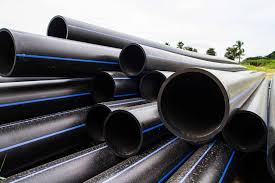Sep . 14, 2024 18:46 Back to list
hdpe coupling joint products
Understanding HDPE Coupling Joint Products A Comprehensive Overview
High-Density Polyethylene (HDPE) coupling joints are essential components widely used in various industries, particularly in plumbing, irrigation, and construction. These products are crucial for connecting two lengths of HDPE pipe, allowing for fluid transportation in a seamless manner. This article delves into the significance, features, and applications of HDPE coupling joint products.
What is HDPE?
High-Density Polyethylene is a type of thermoplastic made from petroleum, known for its impressive strength-to-density ratio. HDPE's intrinsic properties include resistance to impact and chemicals, making it ideal for creating durable pipes and fittings. Its excellent tensile strength and flexibility enable it to withstand the rigors of various environments, while its lightweight nature simplifies installation and reduces transportation costs.
The Role of Coupling Joints
Coupling joints serve as connectors for two pipe segments, ensuring a secure and leak-proof connection. In HDPE piping systems, these joints are designed to handle both the internal pressure and any external forces that may act on the pipes. They are typically available in various types, including threaded, electrofusion, and socket fusion joints, each catering to different installation techniques and requirements.
Features of HDPE Coupling Joints
1. Durability HDPE coupling joints are highly resistant to corrosion and UV radiation, ensuring longevity even in harsh environmental conditions. This durability translates to lower replacement and maintenance costs over time.
hdpe coupling joint products

2. Leak-Free Performance Most HDPE couplings are designed to create a tight seal that prevents leakage, which is critical in plumbing and irrigation systems. This feature not only conserves water but also protects surrounding areas from potential damage caused by leaks.
3. Ease of Installation The installation process for HDPE coupling joints is straightforward, requiring minimal tools. For example, electrofusion joints utilize an electric current to create a bond, while socket fusion joints simply involve heating and joining the pipe and coupling.
4. Versatility These coupling joints can be used in various applications, including residential plumbing, agricultural irrigation systems, industrial processes, and municipal water services. Their adaptability to different requirements makes them a popular choice in many sectors.
Applications
HDPE coupling joints are ubiquitous in infrastructure projects. They are employed in water distribution systems, where reliable and safe water transport is paramount. In agriculture, they facilitate irrigation, ensuring that crops receive the necessary hydration without interruptions or losses due to leaks. Furthermore, in industrial settings, these joints are helpful for chemical transportation, where resistance to corrosion is crucial for safety and efficiency.
Conclusion
In summary, HDPE coupling joint products play a vital role in modern piping systems. Their durability, leak-proof design, ease of installation, and versatility make them indispensable across various applications. As industries continue to evolve and seek reliable solutions for fluid transport, HDPE coupling joints will undoubtedly remain at the forefront, providing superior performance and value. Whether it’s constructing a new pipeline or upgrading an existing system, choosing the right coupling joint is essential for ensuring the longevity and efficiency of the entire installation.
-
High-Quality PVC Borehole Pipes Durable & Versatile Pipe Solutions
NewsJul.08,2025
-
High-Quality PVC Perforated Pipes for Efficient Drainage Leading Manufacturers & Factories
NewsJul.08,2025
-
High-Quality PVC Borehole Pipes Durable Pipe Solutions by Leading Manufacturer
NewsJul.08,2025
-
High-Quality PVC Borehole Pipes Reliable PVC Pipe Manufacturer Solutions
NewsJul.07,2025
-
High-Quality UPVC Drain Pipes Durable HDPE & Drain Pipe Solutions
NewsJul.07,2025
-
High-Quality Conduit Pipes & HDPE Conduit Fittings Manufacturer Reliable Factory Supply
NewsJul.06,2025

